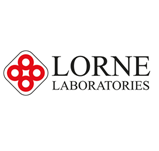How do you find out what blood type you are?
12 September 2014
There are many ways to find out what blood type you are; Generally doctors do not do regular blood tests, but you can request for it. One of the other most common ways is to give blood. When you donate blood, it is tested for various factors, one of the most important factors being your blood group.
The specific blood group is tested through blood samples. Blood typing is a method that tells you what group and blood type you have based on the proteins, antigens on your blood cell. Grouping reagents are used, mostly to test the blood groups for blood transfusions.
Up until 1901, experiments with blood transfusions and the transfer of blood into a person’s bloodstream caused a lot of deaths due to lack of knowledge on the existence of blood groups.
Austrian Karl Landsteiner discovered human blood groups at the beginning of the 20th century. He discovered we all had different blood groups, so not everyone could share blood with the person next to them. The discovery made blood transfusions safer.
Blood is grouped according to the ABO blood typing system, in the following four categories:
• Type A
• Type B
• Type AB
• Type O
How are blood tests taken?
Taking blood samples is quick and easy. Blood is drawn from the veins (most commonly from the inside of the arm) but it’s difficult to detect the vein, the back of the hand can be used. An elastic band, which is placed around the upper arm, is used to apply pressure to the veins so that they swell and bleed. An injection then gets pierced into the skin, to extract a sample.
The blood is collected into a tube, on a slide, a test strip or a small container. Then your blood is tested through the ABO typing method.
The blood sample is mixed with antibodies. There are three different reagents: Type A, Type B and Rh antibodies.
In short:
• Type A blood groups have anti-B antibodies
• Type B blood groups have anti-A antibodies
• Type O contains both A and B antibodies
Rh antibodies are a factor that many people have on the red blood cell’s surface. Those that have the antigen are Rh+ and those who do not, are Rh-.
For anything that involves blood transfusion, it is important for all parties involved to understand the importance of blood groups and reactions. If one blood type is mixed with another that creates antibodies against it, it can cause agglutination.
What is agglutination?
Compatibility of blood groups is highly important, otherwise it can be life threatening. When blood groups do not work together, the red blood cells will clump or agglutinate. These agglutinated blood cells will block blood vessels, which will lead to a stop in blood circulation to the body. Agglutinated blood cells can also leak into the body, a slower process but possible, leading to infection. The hemoglobin in the red blood cell can be toxic when mixed with a ‘foreign’ blood type, which can become critical and cause death.
It is useful to know what blood type you are, it will help you to understand the process when you donate blood, and for blood transfusions.
< Back to blog list
Share





